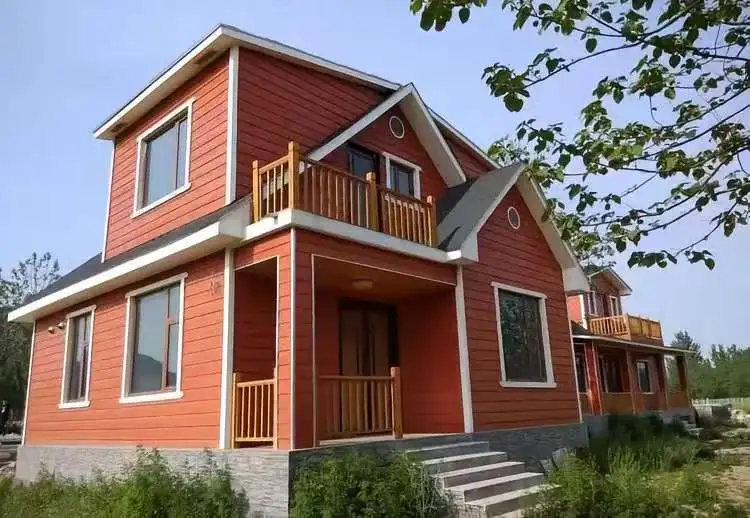The Aesthetic Appeal of Exterior Metal Siding Panels
One of the primary reasons architects adore exterior metal siding panels is their unparalleled aesthetic versatility. These panels offer a wide range of design possibilities, allowing architects to create unique and visually striking building exteriors. With options ranging from sleek, modern finishes to more traditional textures, metal siding panels can complement any architectural style.
Customization Options
Exterior metal siding panels come in an extensive array of colors, finishes, and patterns, giving architects significant creative freedom. Designers can select from the wide RAL color range or opt for custom finishes, including metallic, matte, or textured coatings, to achieve the precise visual effect they desire. This high level of customization supports seamless integration with surrounding architecture or allows for bold, eye-catching facades that become striking focal points in urban or natural landscapes.
Texture and Dimension
Metal siding panels can be fabricated to replicate a wide range of textures, such as authentic-looking wood grain, natural stone finishes, or contemporary abstract patterns. This versatility adds depth and tactile dimension to building facades, making them visually engaging from different angles and lighting conditions. By introducing texture, architects can break the monotony of flat surfaces, adding sophistication and dynamic visual appeal to both modern and traditional architectural projects.
Mixing and Matching
Architects often value the flexibility to mix and match various panel styles, colors, and installation orientations, such as vertical, horizontal, or diagonal layouts. This design freedom makes it possible to create distinctive patterns and customized exterior expressions that set buildings apart. Additionally, metal siding panels can be effectively combined with complementary materials like glass, wood, or concrete, further expanding creative opportunities and allowing each project to reflect a unique architectural vision.
Durability and Performance: A Winning Combination
Beyond their aesthetic appeal, exterior metal siding panels are cherished by architects for their exceptional durability and performance characteristics. These panels are engineered to withstand harsh weather conditions, ensuring longevity and minimizing maintenance requirements.
Weather Resistance
Exterior metal siding panels are engineered to resist corrosion, fading from UV exposure, and damage from other environmental factors. This impressive resilience ensures that a building's facade retains its appearance and structural integrity over time, even when exposed to harsh climates. The panels are capable of withstanding extreme temperatures, strong winds, and heavy precipitation, making them a versatile and reliable choice for diverse geographical locations and architectural styles.
Fire Resistance
Many exterior metal siding panels meet strict fire safety standards, often achieving Class A or Class B fire ratings, which are among the highest levels of fire protection for building materials. This enhanced fire resistance helps slow the spread of flames in the event of a fire, protecting occupants and property. It also provides peace of mind for building owners and can contribute to lower insurance premiums due to reduced overall fire risk.
Low Maintenance
The exceptional durability of metal siding panels translates directly into reduced maintenance demands over the life of a building. Unlike traditional siding materials, which may require frequent repainting, sealing, or repairs, metal panels maintain their color, finish, and structural integrity with minimal effort. This low-maintenance quality is particularly valuable for large commercial projects, multi-story buildings, or urban developments where routine exterior upkeep can be challenging, time-consuming, and expensive.
Energy Efficiency and Sustainability
In an era where energy efficiency and sustainability are paramount concerns, exterior metal siding panels offer architects a solution that addresses both issues effectively. These panels contribute to improved building performance and align with green building practices.
Thermal Insulation
Numerous outside metal siding boards join progressed separator materials such as polyurethane, polystyrene, or shake fleece. This built-in cover essentially progresses a building's warm execution by controlling indoor temperatures all through diverse seasons. As a result, the require for warming and cooling is decreased, which brings down vitality utilization and operational costs. Past money related benefits, this warm productivity too contributes to a more comfortable indoor environment and makes a difference diminish the building's generally carbon impression.
Recyclability
Metal siding boards are habitually delivered from recyclable materials like aluminum or steel, adjusting well with cutting edge eco-friendly development hones. At the conclusion of their benefit life, these boards can be completely reused and repurposed or maybe than getting to be landfill squander, which preserves important crude materials. This recyclability is especially imperative as modelers and builders progressively center on assembly maintainability targets and seeking after green building certifications for naturally dependable development ventures.
Long Lifespan
The exceptional durability and extended lifespan of exterior metal siding panels further enhance their sustainability credentials. These panels can withstand decades of exposure to weather and environmental stress without significant deterioration, reducing the need for frequent repairs or replacements. This longevity not only conserves raw materials and reduces waste but also helps minimize the environmental impact over the building's life cycle, supporting long-term sustainability goals in both residential and commercial construction.
Conclusion
Architects' affinity for exterior metal siding panels stems from the perfect balance these materials strike between aesthetics, performance, and sustainability. Their versatility in design, coupled with exceptional durability and energy-efficient properties, makes them an ideal choice for a wide range of architectural projects. As the construction industry continues to evolve, exterior metal siding panels are likely to remain a favored option among architects seeking innovative and reliable building envelope solutions.
For more information about exterior cladding and facade solutions, including our premium exterior metal siding panels, please contact us at info@sdqsc.com. Our team at Weifang Sandong Building Materials Co., Ltd. is committed to providing top-quality products and unparalleled service to enhance your architectural projects.